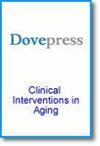Potentially Inappropriate Use of Medication and Its Determinants Among Ambulatory Older Adults in Six Community Chain Pharmacies in Asmara, Eritrea: A Cross-Sectional Study Using the 2023 American Geriatric Society Beers Criteria®
IF 3.7
3区 医学
引用次数: 0
Abstract
Background: Potentially inappropriate medication (PIM) use is one of the main drug-related problems encountered in older adults. It is associated with adverse drug events, morbidity, mortality, increased economic costs, and negative effects on the quality of life that requires strict monitoring of prescriptions in older adults. Thus, the study aimed to assess potentially inappropriate medication use and its determinants among older adults.Methods: A cross-sectional study was conducted among all outpatient prescriptions dispensed to older adults (aged 65 years and above) in six community chain pharmacies in Asmara, Eritrea. Data were collected retrospectively, between June 16 and July 16, 2023. PIMs were detected using the 2023 American Geriatric Society (AGS) Beers Criteria®. Descriptive statistics and logistic regression analysis were performed using IBM SPSS® (Version-26.0).
Results: A total of 2680 outpatient prescriptions dispensed to older adults were included in this study. The prevalence of PIM among prescriptions was 18.1% (95% CI: 16.7, 19.6). Moreover, a total of 470 medications were found to be avoided in older adults. The most commonly prescribed PIMs were sulfonylureas (27.2%) and substituted alkylamines (16.2%). The prevalence of prescriptions containing medications to be used with caution in older adults was 13.2% (95% CI: 12.0, 14.5). Age (Adjusted Odds Ratio (AOR))=0.98, 95% CI: 0.97, 0.99), polypharmacy (AOR=2.77, 95% CI: 1.49, 5.15), and general practitioner prescriber (AOR=1.38, 95% CI: 1.11, 1.70) were significantly associated with PIMs.
Conclusion: A considerable number of ambulatory older adults were exposed to PIMs which require a close attention by policymakers, program managers, and healthcare professionals.
厄立特里亚阿斯马拉六家社区连锁药店中流动老年人潜在的用药不当及其决定因素:使用 2023 年美国老年医学会 Beers 标准®的横断面研究
背景:潜在用药不当(PIM)是老年人遇到的主要药物相关问题之一。它与不良药物事件、发病率、死亡率、经济成本增加以及对生活质量的负面影响有关,因此需要对老年人的处方进行严格监控。因此,本研究旨在评估老年人潜在的用药不当及其决定因素:对厄立特里亚阿斯马拉六家社区连锁药店为老年人(65 岁及以上)开具的所有门诊处方进行了横断面研究。数据是在 2023 年 6 月 16 日至 7 月 16 日期间以回顾性方式收集的。使用 2023 年美国老年医学会 (AGS) Beers Criteria® 检测 PIM。使用 IBM SPSS® (Version-26.0) 进行了描述性统计和逻辑回归分析:本研究共纳入了 2680 份老年人门诊处方。处方中 PIM 的发生率为 18.1%(95% CI:16.7, 19.6)。此外,共有 470 种药物被老年人避免使用。最常见的处方药是磺脲类药物(27.2%)和替代烷基胺类药物(16.2%)。老年人处方中含有应慎用药物的比例为 13.2%(95% CI:12.0,14.5)。年龄(调整比值比 (AOR))=0.98,95% CI:0.97,0.99)、多种药物(AOR=2.77,95% CI:1.49,5.15)和全科医生处方(AOR=1.38,95% CI:1.11,1.70)与慎用药物显著相关:结论:相当多的非卧床老年人暴露于 PIMs,需要政策制定者、项目管理人员和医疗保健专业人员密切关注。
本文章由计算机程序翻译,如有差异,请以英文原文为准。
求助全文
约1分钟内获得全文
求助全文
来源期刊

Clinical Interventions in Aging
GERIATRICS & GERONTOLOGY-
CiteScore
6.20
自引率
2.80%
发文量
193
期刊介绍:
Clinical Interventions in Aging, is an online, peer reviewed, open access journal focusing on concise rapid reporting of original research and reviews in aging. Special attention will be given to papers reporting on actual or potential clinical applications leading to improved prevention or treatment of disease or a greater understanding of pathological processes that result from maladaptive changes in the body associated with aging. This journal is directed at a wide array of scientists, engineers, pharmacists, pharmacologists and clinical specialists wishing to maintain an up to date knowledge of this exciting and emerging field.
 求助内容:
求助内容: 应助结果提醒方式:
应助结果提醒方式:


